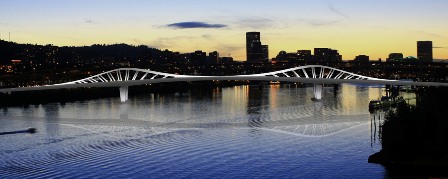 Some things just must be cleared up by the New Year, yes? Like what’s happening at the Los Angeles Museum of Contemporary Art, which threw up its hands last month and cried out for help as its financial position (or at least its endowment) withered away to next to nothing (well, $7 million or so).
Some things just must be cleared up by the New Year, yes? Like what’s happening at the Los Angeles Museum of Contemporary Art, which threw up its hands last month and cried out for help as its financial position (or at least its endowment) withered away to next to nothing (well, $7 million or so).
The New York Times’ Edward Wyatt reports that the MoCA board will decide today whether it will merge with the Los Angeles County Museum of Art or go it alone with “help” from Eli Broad, who has offered MoCA what amounts to a $15 million matching grant to rebuild its endowment and funding for five years of exhibitions (at $3 million per year).
The LA Times is on this case, too. Mike Boehm has some insider stuff. And critic Christopher Knight offers up his own advice — pick Broad and rebuild yourself. Here are the key paragraphs:
Broad helped birth MOCA and then departed, shifting his allegiance to create LACMA’s contemporary program. MOCA is now wary of Broad’s power, resentful of being jilted by its founding chairman. Broad, disaffected now with LACMA, doesn’t want MOCA to end up there. LACMA knows this, and it also knows MOCA is fearful and bitter; so it has opened wide its embracing arms.
No wonder MOCA’s board is nervous. But I say — aside from basta! — better to go with the devil you know than the one you don’t. A LACMA merger means MOCA is instant history (after all the lawsuits get settled). A Broad alliance means there’s hope, which other potential benefactors will require.
The LA Times is also reporting that Getty Museum is freezing hiring and salaries because the Getty Trust lost 25 percent of its value since the summer, when it stood close to $6 billion. We bring up stories such as these simply to suggest that the national environment for arts funding is not good, though there are some glimmers of hope — the St. Paul Chamber Orchestra just retired its deficit and has a surplus, for example.
We managed to miss Randy Gragg’s interview with Miguel Rosales at the Burnside Blog of Portland Spaces magazine last week. Rosales is a designer for the transit and pedestrian bridge that will cross the Willamette River between the Marquam and Ross Island bridges, mostly to connect the city center with the east side light rail line. Basically, Rosales lays out the case for the “wave” bridge (pictured above) he’s invented, as opposed to the cable-stay bridge, which is the other primary alternative he and Schlaich Bergermann and Partners have considered. He slags the cable stay proposal, and also the Sauvie Island bridge’s application of cable stay technology. It’s interesting — and he IS convincing. Give us the wave! Supposedly, the advisory committee was going to recommend one of the two last week (the cable-stay is cheaper and easier to build, apparently), but our Internet researches failed to find an outcome.
We might have listed the new round of RACC grants, but we suggest you just jump over to Culture Shock for that. You also might linger, as a delicate perfume might, to read Mighty Toy Cannon’s take on having a Victory Martini at the Victory Bar on SE Division with Angela Sanders, who besides writing mystery novels and grants, also happens to be a specialist in prose connected to the human nose — specifically fragrances — at the website Now Smell This. Like MTC, I’m amazed at the inventiveness of Angela’s descriptions.
Speaking of MTC, he passed along a link to Daniel B. Smith’s New York Times magazine story on Lewis Hyde, poet and polymath’s polymath and author of The Gift, among other things. Hyde is now working on the problem of the “intellectual property”, which we’ve mentioned here before, and Smith’s story is an excellent introduction.
OK, so most of this stuff will NOT be cleared up the New Year — that just leaves us so much more to talk about!